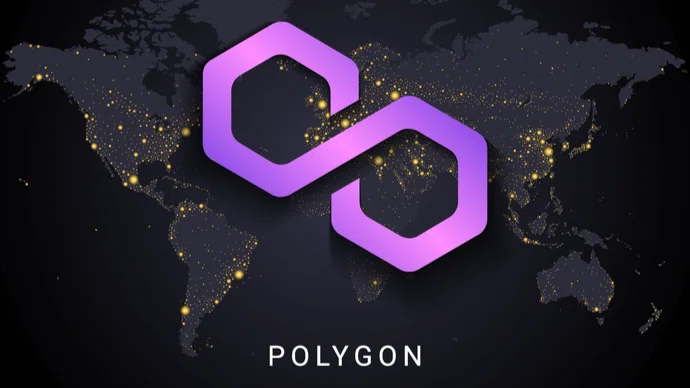Going into the pandemic, BNPL became the fastest growing eCommerce payment method in advanced markets, giving consumers some moment of relief from the pressure of outright payments or the interest-bearing credit card options to meet their immediate needs. Simply put, the BNPL model disrupts the credit card model the traditional banks run with, although it targets a different set of customers — the underserved.
In Latam and sub-Saharan Africa, we have seen more tech startups adopt this model, necessitated out of creating new markets. It makes sense for founders as this could lead to a much bigger pool of last-mile customers - the earning capacity of the last-mile customer remains a challenge.
Beyond this, founders have found this pricing strategy to build stickiness for their startup- with the right customer-driven approach, they remain with you. In the fragmented retail commerce space, where pricing is a value add and there are no loyal customers, this might prove necessary. BNPL feels like when you hit a brain wave, on a separate note, it is important to note that this is not new and typically the consumer goods companies have over the years used this model for their B2B distribution. For example, in Nigeria, the credit card model is still yet to go full scale where card penetration is less than 3%.; the BNPL is its replica and is expected to catch on faster and be seen across other African markets.
In the African ecosystem, we have seen impressive financing rounds by retailers like TradeDepot, MarketForce, SokoWatch now Wasoko all in the B2B/B2C retailing space, Credpal — a fintech credit card player, and even the proptech startups are not left behind with Spleet raising to disrupt the property market and make housing affordable.
The BNPL model makes sense; however, it is important that the adoption of this model is done with eyes wide open, as you know building a sustainable ‘recurring’ business model is the long-term goal — no loss economics! The model is heavily dependent on economies of scale for a growth-driven startup, and turning profitable might require a lot more tactics and stakeholder management. Consistent income earners will definitely be intrigued by this offering as a way to manage their finances. In a market where a significant proportion is from the informal sector, this can get complicated easily. Knowing the costs and features before you sign up is important for both parties — the BNPL provider and the target customer.
I have split my thoughts into two, both focused on the BNPL provider and each probably needs a dedicated piece, but I will highlight my thoughts succinctly:
Firstly, your Capital Structure
As a startup, you probably know that your business model plays a huge role in determining your capital structure. As you grow the business, the capital structure gets to change, and finding the right structure is dependent on what the business needs and its potential at the time. Equity is quite useful in the early days, and it makes sense because it is very risky at this stage and you do not need interest-bearing expectations breathing down your neck, as you try to figure out revenue generation and customer acquisition.
What product are you offering and how ‘difficult is it to be ignored’, what is its market potential, the influence level of macros on the business. Your business model determines your conversion rates, repeat purchases or stickiness, abandonment rates, and order value amongst others. Will you adopt the virtual rent-to-own model, off-card or card-linked model, or integrated shopping app model, amongst others? The business model will feed into the capital structure you need at every growth phase of the business.
As the business grows, with more consistent income levels, debt will be instructive as you get to retain ownership stakes without giving too much away too early. You will need to figure it out mathematically as a founder.
The first rule of the game is to ensure you -Match the assets to the liabilities properly. Debt may be cheaper compared to equity stakes but can quickly escalate going concern problems of the business if not timely and properly managed.
Secondly, your Customer — the most important piece of the puzzle
The B2B model is seen to help founders scale faster and efficiently; in certain sectors, it is a risk transfer tactic, and other times it is about meeting the customers where they are. For a BNPL provider, the B2B and B2C model works within the context of the sector. Disposable income and credit check infrastructure are still weak in frontier markets and in an economic downturn, you may tend to see the value chain (B2B2C) align beautifully together. However, thanks to open banking companies like Lendsqr, Indicina, Mono, and Interswitch lending as a service segment, etc, offering API integration that makes providing credit services easier for BNPL providers, there is hope and credit risk might prove easier.
In Nigeria, for example, the Central bank of Nigeria with the BVN — a number code that unifies all a consumer’s bank accounts, making credit risk easier to manage. Across other markets on the continent, some questions might need to be answered- Do you reconcile with credit bureaus? Or is it a direct debit strategy as funds hit the account? How do you truly track sustainable levels of debt for your customer? These are questions that may need to be answered, with eyes wide open, before a BNPL offering is adopted.
Another probing question for me has been, how close is the BNPL value proposition to the real bottom of the pyramid? Is this truly creating new markets or disruptive? The traditional consumer goods companies still target this same group with an age-long ‘BNPL’ strategy, giving their products on credit to retailers. The B2B e-retailing space tries to move closer through the merchants i.e the mum & pop shops/ roadside kiosks; however, the BNPL still largely targets an income class grappling with inflation and other challenges — spoilt for choice with various fintech payment and credit solutions.
Will customer service or relationships matter soon enough, or would it be lower costs as a key success factor? Will e-marketplaces be able to handle credit risk from their customers and the fixed asset costs that may emanate from the logistics component of the business in the coming years? at least for those managing the entire end to end for their customers. Not all BNPL providers will survive, the battle will probably be taken to the customers.
Most African startups adopting BNPL models are already juggling a number of balls — from building trust to supply chain issues to currency challenges and now credit risk. Regulatory scrutiny may creep in, consumer lending or its likes is a different ball game anywhere in the world and you can be sure to expect the traditional banks to be backstage mounting pressure. Be sure to be on the right side of all things legal as you adopt.
One more thought…
Can the BNPL model survive in other industries, beyond retail, considering cultural context and weak support systems? That would be truly innovative, what comes to mind is the Narayana Health case study from Bangalore in India, overcoming financial, logistical, and behavioral barriers.
We definitely need more operating model options- bottom of the pyramid friendly, targeting critical sectors — health, education, etc.
The BNPL model creates really good market expansion opportunities for technology companies disrupting legacy across sectors. It will always be great to see more models designed or adopted from other markets that seek to meet customers where they are within the African context.












